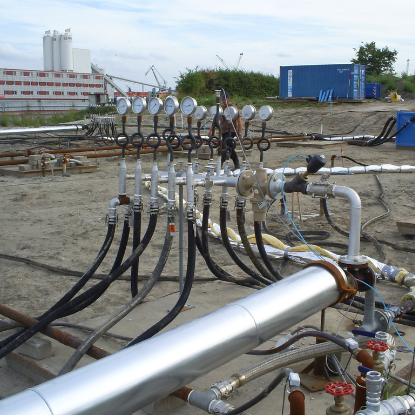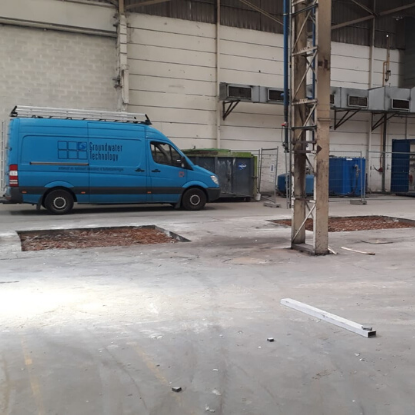Heat application removes contamination
Contaminant properties vary with temperature. Heating increases viscosity, solubility, and vapour pressure. Up to a point, biological processes speed up significantly. We have many options to apply heat to the subsoil, dependent on (amongst others)) availability energy sources. In some cases, we can apply solar energy or residual (waste) heat from industrial processes for sustainable contaminant removal.
Steam Stripping to 110°C
Steam injection may reduce remediation times from multiple years to a few months. Steam is highly efficient to transport heat. Steam injection is a fast and efficient way to increase soil temperatures. Heating the soil enhances the removal efficiency greatly. Vapour pressure increases and viscosity decreases, causing oil to flow much easier. Boiling groundwater produces steam, which forces residual free phase product from even the tiniest of pores.


Medium Low temperature heating to 50°C
We apply heat enhanced extraction in projects with high contaminant mass, such as free phase product, or situations where time to completion is of critical essence. Water (which may well be solar heated) is used to transfer heat to the underground either directly or through heat exchangers. A remote controlled smart extraction system removes small amounts of highly contaminated groundwater.
Low temperature remediation at 30°C
Most biological processes thrive at somewhat increased soil temperature, as long as conditions remain favourable to microbial activity. Using residual heat or other sustainable resources, we increase biological contaminant conversion rates.